7 Ingredients You Should Never Add to a Casserole
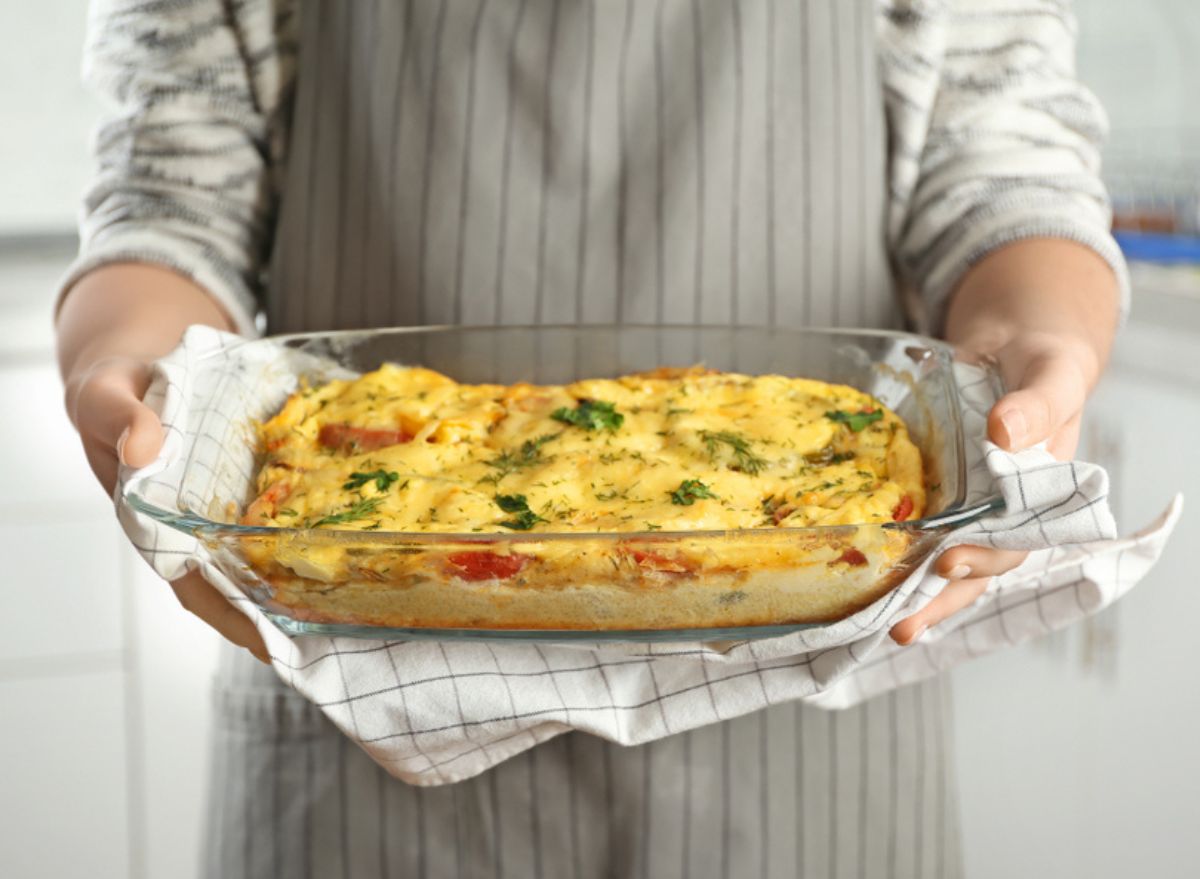
Casseroles make for an easy one-dish meal, but they aren’t known for being the healthiest dishes. Often packed with fatty meat, loads of cheese, and high-sodium canned items, casseroles tend to be high in calories and low in fiber and vegetables. However, this dish can be modified to create a healthy, balanced, and nutrient-dense meal.
Here are seven ingredients you should never add to a casserole. Then, for more healthy cooking tips, make sure to check out 8 Sheet-Pan Recipes That Fight Inflammation.
White rice
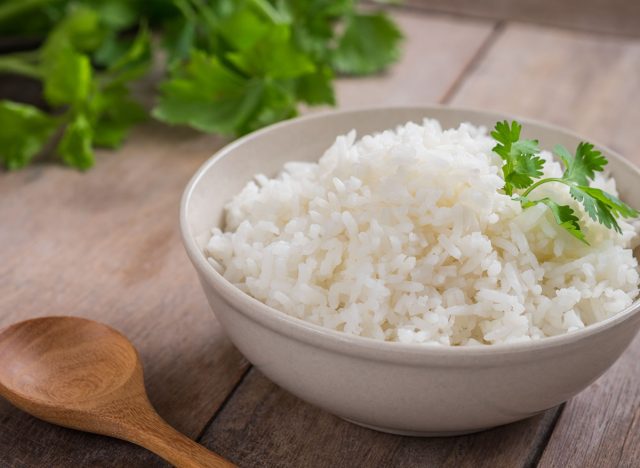
Many casserole recipes call for white rice as the main starch, and while this carb is versatile and can easily be incorporated into a one-dish meal, it is not the most nutritious. Instead of adding white rice to your next casserole, consider using brown rice or wild rice instead. While these forms of rice may take longer to cook, they contain much more fiber, an important nutrient for digestive regularity, satiety, and blood cholesterol levels.
If you are worried how the brown rice will cook up in your casserole, try using parboiled brown rice or add already cooked rice into your dish to avoid any uncooked grain in your casserole. Lastly, if you are interested in a lower-carb rice alternative, try riced cauliflower!
Tater tots

While this ingredient isn’t the most popular casserole addition, there are many breakfast and even dinner recipes that call for these fried potatoes. Potatoes are a good source of carbohydrate and can even provide other important nutrients like fiber and potassium, but there are better ways to incorporate this starch into your dish.
Instead of adding fried tater tots to your casserole, try adding shredded potato or sweet potato. You can shred at home, or buy pre-shredded frozen potatoes to add to your dish. This swap will reduce fat grams, and increase fiber, vitamins, and minerals, and even more so if you trade the white potato for sweet potato.
Processed cheese
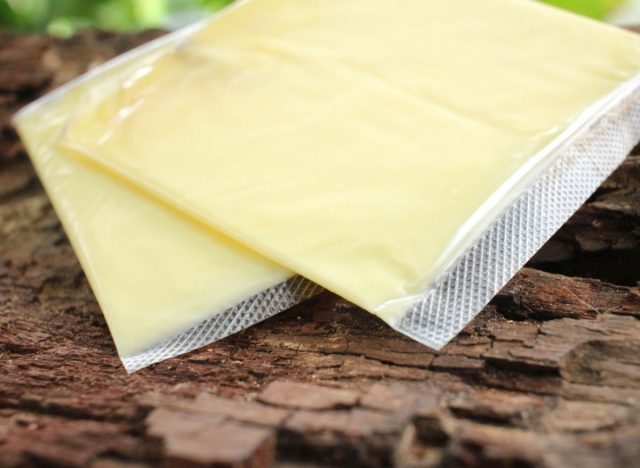
This is a broad category, but you are likely familiar with some of the players. American cheese is one of the more common processed cheeses, and you are likely familiar with the brand name Velveeta. While these products can contain important ingredients associated with dairy products, like protein, calcium, and vitamin D, they often contain many other questionable ingredients, too.
Higher saturated fat and sodium content, preservatives, and artificial food coloring are some of the downsides to using processed cheese. While it melts nicely into a casserole, you are better off using less processed shredded cheese in your next dish. Cottage cheese and ricotta are different cheese options to consider, too.
Sugar
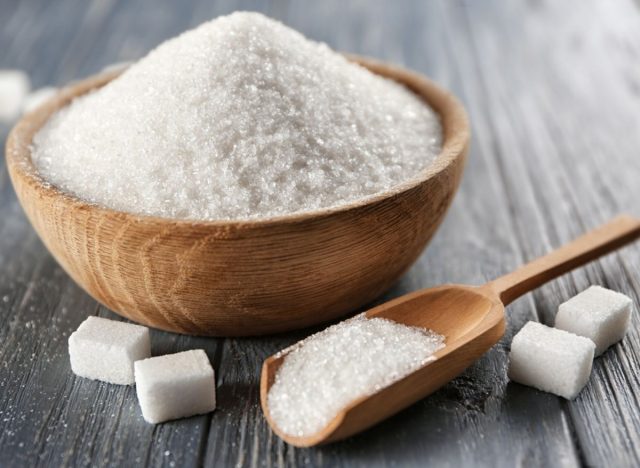
There may not be many casserole recipes that call for added sugar, however, the sauces often added to these dishes can contain surprisingly high amounts of sugar. Marinara sauce, salad dressing, barbecue, and stir fry sauces are some examples of sugar-containing sauces that may be used in casseroles.
When adding sauce to your dish, look for pre-made options that have no added sugar. If you are having a hard time finding this alternative, choose the option with the lowest sugar, or explore homemade recipes that forgo sugar. Additionally, if the casserole recipe calls for sugar, cut the amount in half, or skip it all together. Chances are you won’t notice it is missing in a savory dish, and you will save yourself a few grams of processed, refined sugar per serving.
Pork sausage
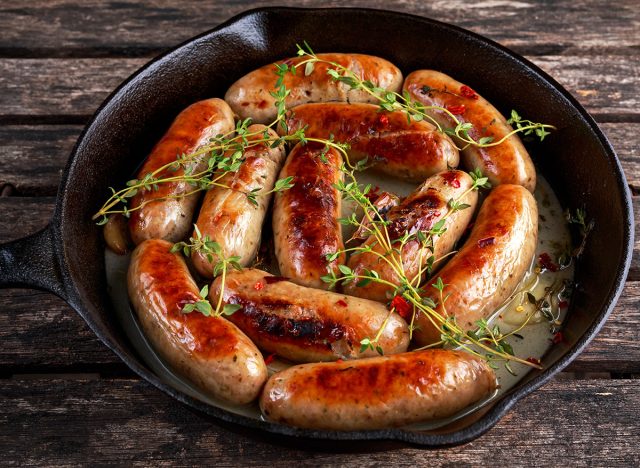
While leaner meats, like chicken and turkey, are commonly used in casserole, fatty sausage and beef are often found in these dishes, too. Yes, even the fattiest cuts of meat contain essential protein, but the higher fat grams make them a less desirable protein source.
Pork sausage is one of the higher fat meats per ounce, and there are some easy swaps to limit total fat and saturated fat grams in your casserole. Try alternatives, like chicken or turkey sausage, look for lower fat pork sausage, or make your own sausage using lean ground meat and your seasonings of choice. Sausage is all about the seasoning, so you can make a delicious alternative packed with your flavors of choice.
White pasta
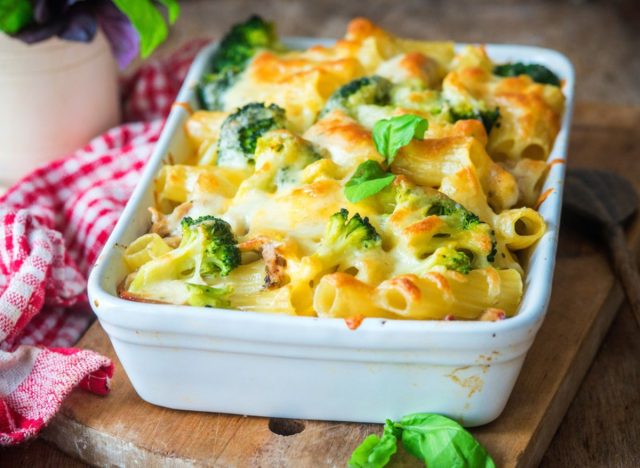
Pasta is another common carb source in casserole, and similar to rice, there are better alternatives to traditional white pasta. In making white pasta, much of the fiber is processed out, leaving the noodles lacking in this essential nutrient. Whole wheat noodles, or options made with brown rice, quinoa, beans, or lentils are great alternatives to white pasta. These options are much higher in fiber and other essential nutrients, like iron, and some even have enough protein to create a well-rounded meal.
Full-sodium canned items
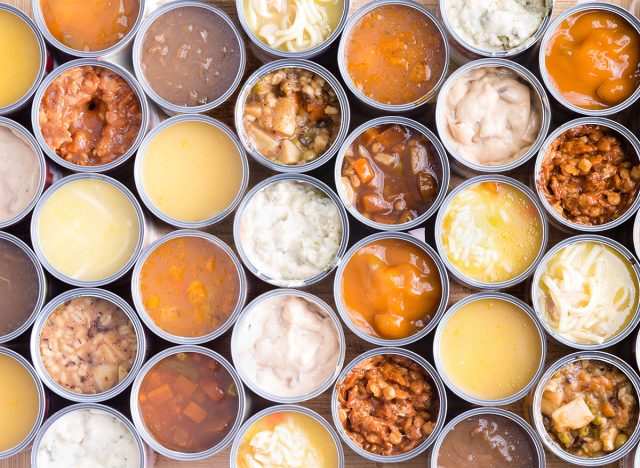
Soups, beans, diced tomatoes, and “cream of” soups are frequently used in casseroles, with some recipes calling for multiple canned items. Using canned ingredients allows the recipe to be put together quickly, but they are often packed with sodium, a nutrient that can have a negative impact on blood pressure.
The good news is, most canned items have a lower-sodium alternative available. So, next time you go to buy black beans, diced tomatoes, and cream of chicken soup for a recipe, look for the low or no-sodium varieties to help reduce the salt content of your next casserole.









